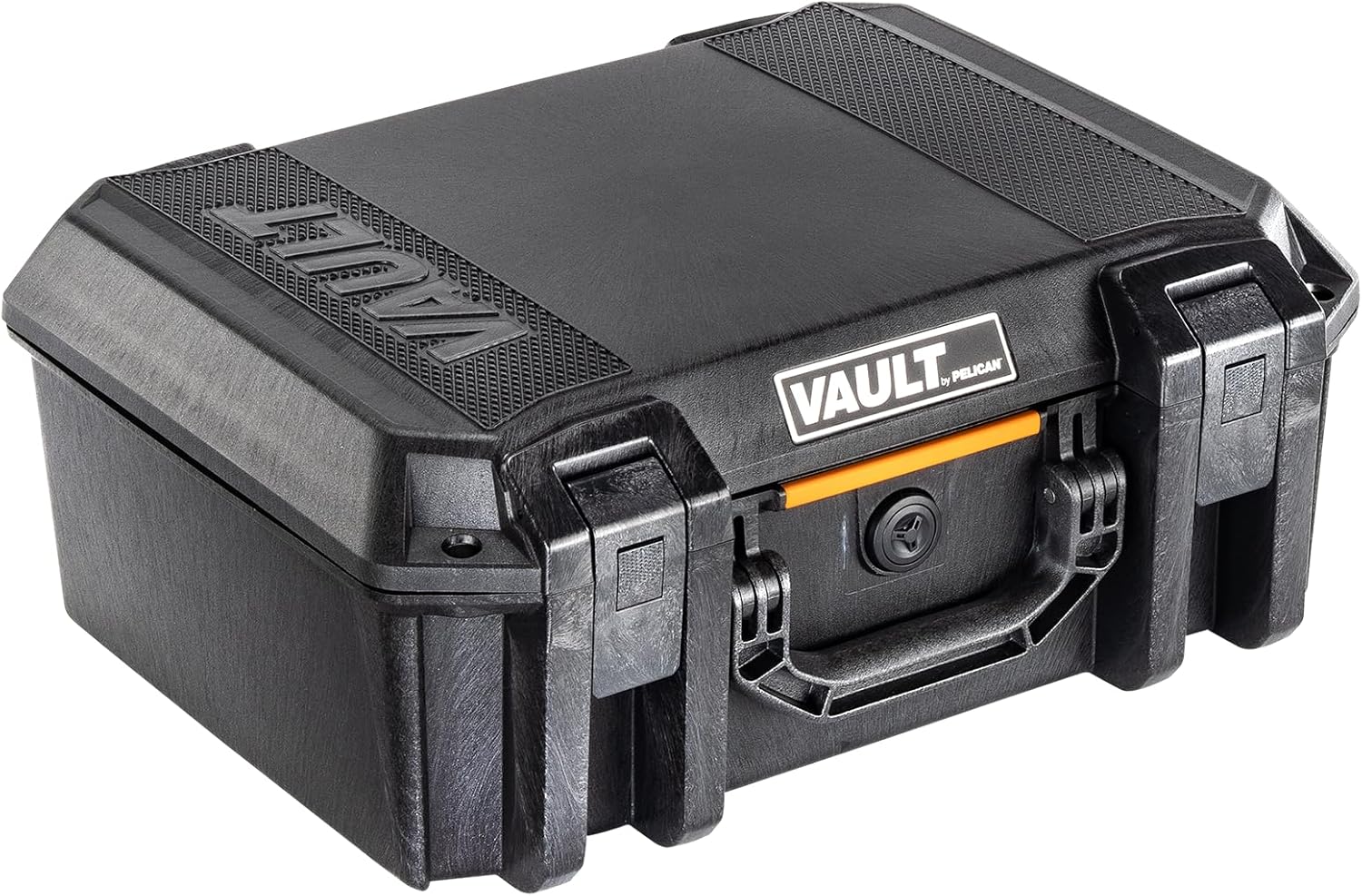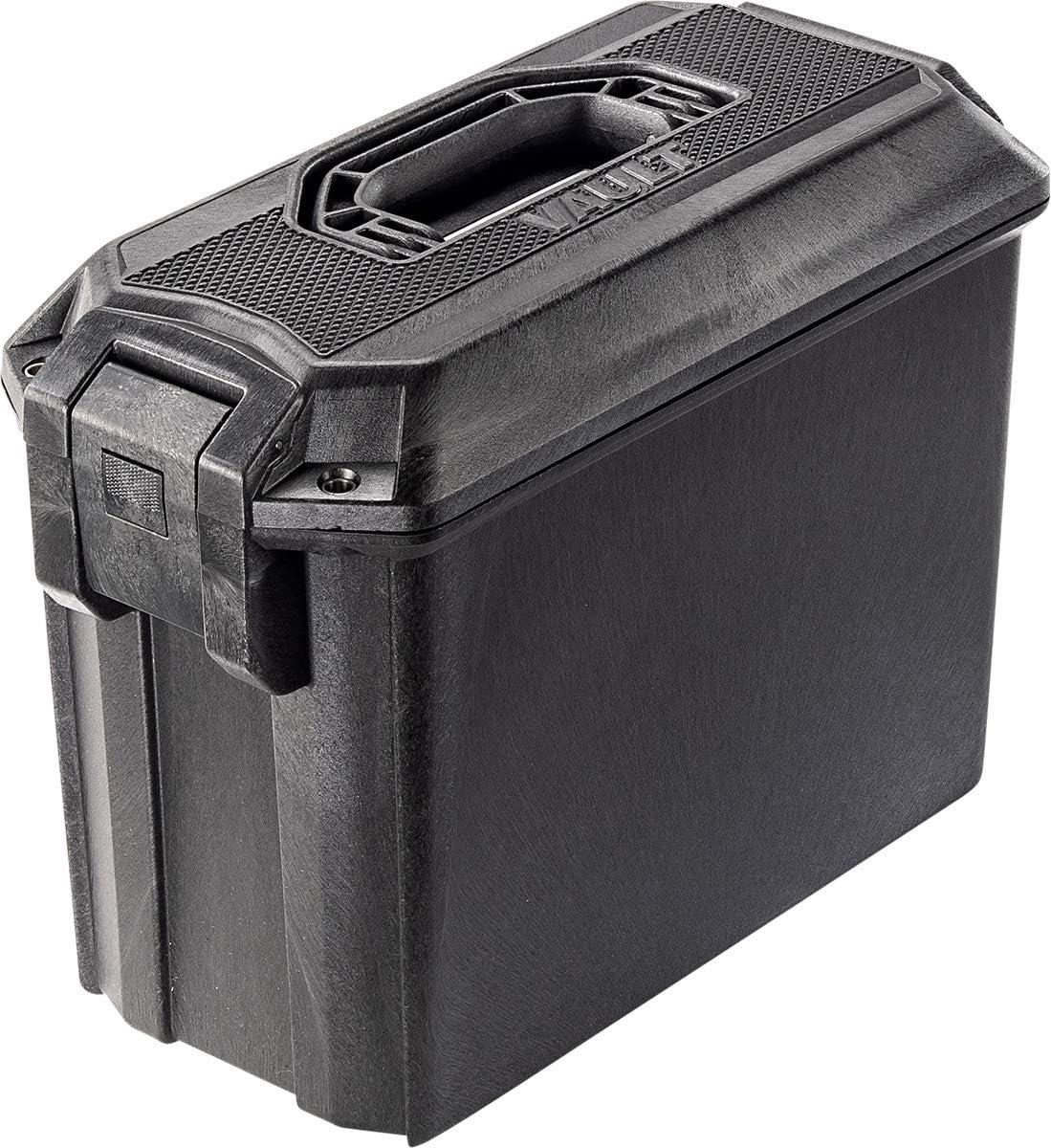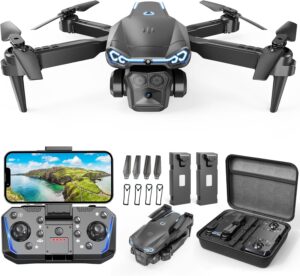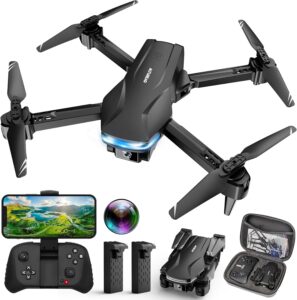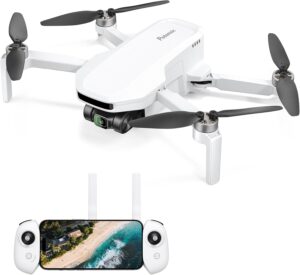Can we offer a review with a wry, conversational sensibility reminiscent of certain contemporary essayists—without copying any one writer’s voice—while telling you exactly what we think of the Pelican Vault V300 Hard Case?
What Is the Pelican Vault V300 Hard Case?
If we had to sum it up in one sentence, we’d say the Pelican Vault V300 is a rugged, weather-resistant hard case sized for cameras, pistols, and a stubborn assortment of small equipment that refuses to be tamed by backpacks. It sits in that sweet spot between “toss it in the trunk” and “check it with the airline,” built to protect fragile or expensive things we’d rather not replace.
The Short Version
We’re talking about a tough polymer shell, stout latches, lockable hasps, and layered foam you can shape to your gear. It’s part of Pelican’s Vault series—the more budget-friendly sibling to Pelican’s flagship Protector and Storm lines—yet still engineered for serious duty. Think road trips in bad weather, range days, shoots on dusty construction sites, or just getting the camera home without lens caps playing a risky game of roulette.
Who We Had in Mind
We wrote this with traveling photographers, weekend shooters, field techs, drone hobbyists, and anyone who’s ever watched baggage handlers from a window seat and thought, “Our stuff deserves better.” If you’ve ever nursed a cracked lens filter back to consciousness or wrapped a pistol in a wool sock, this case is meant to upgrade your life.
Design and Build Quality
Cases like this only work if they don’t baby themselves. The V300’s shell is thick, slightly textured, and laced with molded ribs that keep it from flexing under pressure. The corners come off as quiet heroes—the sort of detail we forget until a case tumbles out of a car and the hero has to get loud.
Shell Material and Finish
The polymer shell feels robust in hand, a little like the panel of a well-built tool chest. Scuffs and scrapes read as a diary of the miles rather than something to fuss over with polish. We noticed that the finish resists the kind of cosmetic swirling that makes some gear look older than it is. It’s built tough enough to shrug off a stray drop, gravel rash, and the stray elbow it might meet in a crowded trunk.
Latches, Hinges, and Handle
The latches close with satisfying confidence—firm, not fussy. There’s a margin of safety in the choreography: align, press, and the lid is cinched; reverse that and it opens without resorting to fingernail acrobatics. The hinges pivot smoothly and don’t complain when we hold the lid open for sorting gear mid-parking lot. The handle carries well; it doesn’t bite into our fingers even when the case is loaded down with hefty glass or a dense hunk of steel in the center.
Weather Protection and Purge Valve
We’re calling this weather-resistant rather than submarine-grade. The gasket in the lid stands up to rain, splashes, and dirt haze. There’s also a purge valve to equalize pressure if we go from mountain air to baking highway or short flights where baggage bays turn thin and loud. That little valve keeps the case from sealing itself shut like a stubborn pickle jar.
Interior: Foam and Customization
Open the lid and we find layers of foam forgiving enough to cradle a camera and firm enough to stop a pistol from shifting. The included foam is designed to be shaped; it’s a Lego set for grownups, except nobody steps on it in bare feet.
Pick-and-Pull Foam vs. Custom Foam
The V300 typically ships with pre-scored foam cubes we can pull out by hand. It’s approachable, and we can reconfigure later if our gear changes. For permanent setups, we can cut the foam with a sharp blade—or go fancy with custom foam inserts (there are third-party services if we want stealthy, snug perfection). Pick-and-pull is great for getting us 90% there by lunch.
Configuring for Cameras
For a camera kit, we like an arrangement that keeps the body in the center with lenses around it like underlings who know their place. We shape each cavity slightly undersized so the foam squeezes gently. If we carry primes, we cluster them by focal length; if we go with zooms, we situate them with the heavy end toward the hinge, because gravity is a negotiator and we prefer to set terms. A microfiber tucked in a corner adds a small luxury, and a couple of silica gel packs in the lid stay quietly on mold patrol.
Configuring for Pistols
When carrying a pistol, we favor a silhouette cutout for an exact fit, plus separate cavities for mags and maybe a small earplug case. We position magazines away from the latches so opening the lid doesn’t tempt gravity to audition for a role. If we switch between more than one pistol, we’ll outline a second footprint off to the side and make shallow cuts so either can sit without slop. In short: everything in its place and nothing prowling around the case like an unsupervised raccoon.
Configuring for Mixed Gear
We know the mixed-gear crowd—flash plus holster, drone plus lenses, compact recorder plus batteries. We like to put the heaviest piece in the center and fan outward. Anything with a battery gets a little separation to keep terminals from meeting by accident. Small odds and ends go into a corner pocket we cut with an intentionally sloppy border so it becomes our “junk drawer”—fresh foam chunks keep even the odd-shaped bits from wandering.
A Quick Breakdown of the Essentials
We put together a simplified table of what actually matters and why. It’s more about the story of each feature than the buzzwords printed on the box.
| Feature | What It Is | Why It Matters |
|---|---|---|
| Rugged polymer shell | Thick, ribbed construction with reinforced edges | Resists crush and impact without turning heavy gear into a kettlebell |
| Weather-resistant gasket | Seal around the lid | Keeps rain, splashes, and dust from freeloading |
| Pressure purge valve | Equalizes pressure across altitudes and temps | Prevents vacuum lock and makes the lid open like a lid, not a safe door |
| Lock-ready hasps | Metal-reinforced holes for padlocks | Lets us secure firearms and pricey camera gear |
| Layered foam | Pre-scored cubes and top lid foam | Fast customization and snug fit for awkward gadgets |
| Heavy-duty latches | Strong, easy actuation | Stays shut in transit and opens without drama |
| Carry handle | Balanced, textured grip | Keeps our knuckles happy on the long walk from car to gate |
| Flat lid interior | Smooth underside with lid foam | Prevents imprint marks and holds the top layer of security foam |
Size, Weight, and Capacity (The Real-World View)
We’re not obsessing over exact dimensions here; what we care about is whether it swallows a camera body and a couple of lenses, or a full-size pistol with magazines, or a field mic with spare batteries and cables. The V300 lives in that medium case world—not too big to carry one-handed, not too small to be useful for a full day’s outing. It’s ideal for a single camera body with two or three lenses, or for one to two handguns plus mags and a cleaning kit. For drones, it fits most compact models with the controller and spare props. The foam also takes to squared-off tools—a compact multimeter, a labeler, or the sort of little power supply that likes to leave dents in weaker cases.
Performance in the Field
We don’t treat gear gently by nature. The V300’s whole reason to exist is to make that our problem, not our gear’s problem.
Rain and Wet Pavement
In weather, it behaves like a good raincoat. Water beads and sprints off the lid, and the gasket keeps it from sneaking inside. After a 20-minute shower courtesy of a stubborn downpour, we opened up to find everything dry. We wouldn’t throw it into a lake for sport, but for rain-soaked sidewalks and SUV tailgates, it’s solid.
Dust, Dirt, and the Construction-Site Shuffle
Dust tries the patience of saints and camera sensors. The V300’s seal keeps particles from hitching a ride. We’ve set it down on dusty lots, in dry grass, and on the bed of a truck that moonlights as a sand distributor. The case returns to decent after a quick wipe with a damp cloth. The interior foam doesn’t shed or crumble easily when trimmed correctly, which limits stray fuzz finding its way into places it shouldn’t.
Drops, Jolts, and the Forgetful Knee
Let’s talk about the bump against a doorway we pretend was intentional. The V300 eats it. It shrugs off the kind of knock that makes lesser cases crack at the latch or warp just enough to compromise the seal. The hinges stay aligned, which matters because a hinge that drifts is a case that stops sealing.
Travel and Compliance
We like cases that play nicely with rules and realities. This one does.
Air Travel with Camera Gear
Checked or carried, we recommend locks on the hasps and a name card—external and internal—just in case kindness and fate quarrel. Even if we carry it on, the lock adds a layer of deterrence during layovers and crowded gates. Keep batteries within recommended limits, cap lenses, and wedge a microfiber towel between items that look like they could make acquaintances while baggage handlers perform interpretive dance.
Air Travel with Firearms
When we travel with a firearm in the United States, we follow TSA and airline rules carefully. The firearm must be unloaded and secured in a hard-sided, locked case. The V300 fits the role; we put non-TSA locks on the hasps and declare the firearm at the airline counter. The case goes inside our checked luggage or becomes its own checked item depending on the airline’s policy. We keep the keys or combination with us. Magazines travel empty unless the airline allows otherwise; ammo typically goes in original boxes or approved containers. We always check the latest TSA and airline-specific rules because regulations have a way of evolving while we weren’t looking.
Road Trips, Range Days, and On-Location Shoots
The V300 shines in trunks, truck beds, and passenger footwells. It stacks without sliding, fits under a backseat in many vehicles, and doubles as a stool in a pinch—though Pelican probably wouldn’t recommend the last bit, and our backside won’t make that a habit. For on-location shoots, it’s handy as a staging table: lid open and gear arranged, nothing rolling off into grass or gravel.
Everyday Use and Ergonomics
Comfort matters when we’re carting gear in and out of places all day. The V300’s handle angle and lid resistance feel time-tested. The lid opens wide enough that we’re not playing peekaboo with our own equipment. The latches are the difference between “we got this” and “we need pliers.” Their motion is linear, consistent, and doesn’t pinch. When gloved, the latch surface area still gives us enough control to open and close without fiddling.
Organization Strategies We Love
The secret to making a hard case work is deciding who sits next to whom.
- Nest the heaviest item in the center and toward the hinge side. It keeps the case balanced and reduces the chance of the lid being yanked around by weight near the front.
- Isolate batteries in their own cutouts. Even in foam, we don’t let terminals touch metal bits like lens mounts.
- Give cables exactly two places to live: a shallow pocket for the daily cable, a deeper cutout for the “just in case” snakes. Otherwise they replicate.
- Reserve one corner for consumables—lens wipes, small tape roll, disposable earplugs, nitrile gloves. We call it the “no-regrets corner.”
- Color-code by foam layer. If we add a thin, colored topper under the lid foam, one glance reminds us if we’ve left a lens on a table. The visual contrast helps.
Comparing the V300 to Other Cases
There are no wrong answers here; only more or less appropriate ones for our needs.
Vault vs. Pelican Protector and Storm
The V300 (Vault series) is built to be tough and affordable. Protector and Storm tend to be the premium lines—with more stringent waterproof ratings and a different feeling latch mechanism. If we need guaranteed submersion performance and a long history of withstanding truly brutal industrial life, Protector or Storm might be the upgrade. If our world is rain, dust, and the bumps of travel rather than the hold of a ship, the V300 is an excellent balance of cost and confidence.
Vault vs. Other Brands
- Nanuk: Often praised for soft-close latches and ergonomic touches. If we’re latch snobs, Nanuk charms. Price often lands higher.
- Seahorse: Solid value and customization options. Foam quality varies by model, but customer service gets good marks.
- “Budget clones”: Cheaper up front, but foam and latch quality can be uneven. If we’re protecting a camera that cost more than a used car, we don’t gamble.
Durability and Long-Term Reliability
What we notice over months is hinge alignment, latch consistency, and seal integrity. The V300 keeps its lid-line straight and the gasket remains elastic after cycles of heat and cold. Scratches accumulate but don’t seem to compromise anything. Foam impressions deepen slightly over time; that’s normal. We rotate fragile items in their cutouts occasionally to avoid permanent foam memory that’s off by a few millimeters.
Security: Locks and Peace of Mind
The lock hasps are built for real padlocks, not novelty trinkets. We use quality locks with a shrouded shackle to discourage bolt cutters. For the gear-savvy, we add a small Bluetooth tracker inside (tucked under the lid foam, away from metal lumps) so if the case wanders, we have a bead on it. A laminated ID card inside the lid, behind the foam, adds a little class and practical rescue if an honest person finds it before we do.
Quirks and Things We Wish Were Different
No case is perfect, and perfection would be suspicious anyway.
- The lid opens and stays put, but we wouldn’t mind a slightly stiffer hold-open angle for windy parking lots.
- The foam is good, but a tiny included sample of extra foam blocks would be a nice touch for patching mistakes.
- We’d love optional dividers as a factory accessory for quick reconfigurations without knives and cutting boards.
None of these are dealbreakers; more like the wish list we file under “someday.”
Setup: Cutting Foam Without Tears
We learned the hard way so you don’t have to.
- Trace first. We outline each item with a silver paint marker or painter’s tape so we can see the shape against the foam.
- Undersize by a hair. Foam hugs best when we leave a margin and then finesse with a blade.
- Use a fresh blade and long cuts. Serrated knives can tear; a sharp utility blade slices cleanly.
- Go layer by layer. If the item is shallow, don’t cut to the bottom. We like a thin floor to keep hardware from printing through.
- Seal edges with patience. Running the blade along edges once more straightens the “fuzz” and gives a cleaner final fit.
Maintenance and Care
The V300 earns our respect with low maintenance.
- Wipe the gasket. A quick pass with a damp cloth keeps the seal honest.
- Vacuum foam. After trimming, we vacuum the crumbs so they don’t migrate into ports and lens rings.
- Inspect latches and hinges. Look for grit, wipe clean, move on. A dry brush works wonders.
- Air it out. After a rainy outing, we prop it open for a half-hour so moisture doesn’t linger.
- Refresh desiccant. Silica packs can be re-baked to restore their appetite for humidity.
Use Cases We’ve Tried and Loved
- Camera day kit: one mirrorless body, a pair of lenses, filters, batteries, and a compact flash—all nestled in a way that says, “No rolling around on my watch.”
- Range carry: full-size pistol, micro-compact backup, four mags, and a cleaning snake. Everything locked, everything silent in transit.
- Field audio: handheld recorder, a compact shotgun mic in its suspension, two lavs, a small mixer, with coiled cables and color-coded caps. We no longer untangle cables with the kind of language that frightens pedestrians.
The Foam Puzzle: Building a Layout That Works
We think of our gear in categories: primary, secondary, and nice-to-have. Primary sits central with the best padding. Secondary flanks the primary. Nice-to-have lives near the latches, where it’s reachable but expendable in a pinch. We also practice opening the case in a tight spot before we commit to a layout; the “hinge vs. wall” reality makes us rethink where to park our main tool. We like labeling the foam cavities on the underside of the lid—subtle and helpful when fatigue is in charge.
Noise, Vibration, and Our Sanity
The V300 is quieter than a bag of tripods in a trunk. Once closed and latched, we don’t hear rattling, which is good because the sound of rattling is the sound of future purchases. The foam eats vibration well; lenses don’t drift, and small tools stay in the outline we gave them like they promised.
The Value Proposition
We measure value by the cost of replacement. If the V300 protects a single lens or keeps a pistol unscathed from an errant knock, the math is already smiling. Compared to premium lines, the V300 lands in a price range that doesn’t make us hide the receipt. It’s the capable workhorse for most of what we do, and for truly extreme scenarios we can always step up. For a lot of us, this is the best balance between cost and confidence.
Pros and Cons
What We Love
- Rugged build with a seal that laughs at rain and dust
- Customizable foam that’s easy to shape and reconfigure
- Real lock hasps that work with serious padlocks
- Latches that close decisively and open without nail-biting
- Comfortable handle and sensible footprint for cars and carry
What Gives Us Pause
- Weather-resistant rather than fully submersible-rated
- Foam cutting is a manual art; pre-cut accessory inserts would be nice
- Lid stay could be a touch stiffer in gusty conditions
Who It’s For
- Photographers who want one body, a couple lenses, and essentials kept safe and organized
- Gun owners who travel to ranges or across state lines and need a lockable, compliant case
- Field techs and creators who carry a mix of fragile gear and blunt objects
- Anyone who’s had an expensive lesson in what unmanaged gravity does to glass and metal
Who Might Want Something Else
- Deep-sea dreamers and full submersion scenarios: look at premium waterproof-rated cases
- Those who reconfigure daily: consider divider-based systems rather than foam
- Minimalists with a pocket camera and a single battery: a smaller, lighter case might fit the bill
Scenario Walkthroughs: How We Load It
Camera Kit: City Shoot
We place the body dead center, mount off, front cap on. A fast prime goes to the left, a general-purpose zoom to the right. Filters sit over the prime, each in its own pouch. The SSD and card wallet share a small rectangular pocket. Batteries sit in their own carved nook with polarity consistent, because future us appreciates a pattern. A microfiber cloth lives beneath the lid foam where it won’t go wandering.
Range Day: Two Pistols, No Fuss
Pistol one sits in a deep cutout with the grip facing right; pistol two is mirrored on the left. We cut mag wells vertically to keep them tidy and put a cleaning snake in a shallow channel near the hinge. Earplugs and a small bottle of oil share a cutout that makes sense to our fingers even in the cold.
Field Audio: We Love a Quiet Case
Recorder far right with extra padding at the corners, short shotgun mic in the center with its shock mount, lav mics left with wind muffs in a tiny bay that keeps them from wandering. We tuck a sharpie and gaffer tape roll at the front, because labeling is a love language.
Tips That Save Time and Heartache
- Photograph your layout. If a foam chunk goes missing or something feels off, a photo reminds us how it used to be.
- Double-layer the most fragile areas with an extra sheet of thin foam beneath the standard layer.
- Keep a tiny first-aid kit in the lid—bandages and a couple alcohol wipes—because foam knives have opinions.
- Use bright tape on black items. In a dark case, everything is shadow; bright tape breaks the camouflage.
- Write a mini inventory under the lid foam. When the list says there should be two batteries and we see one, we go find the other before leaving.
Questions We Hear All the Time
Is it waterproof?
We’d call it highly weather-resistant. Rain, splashes, dust—no problem. Submersion? That’s not this case’s job description. If we need guaranteed waterproofing at depth, we’d step up to one of Pelican’s premium lines with a specific ingress rating.
Will it fit a full-frame camera with a grip?
Yes in most configurations, especially if we orient the camera diagonally and cut foam to match the silhouette. It’s a comfortable fit for a body, two lenses, and small accessories.
Can we check it with airlines?
Yes, and we have. We lock it, label it, and when traveling with a firearm, we follow TSA and airline rules to the letter. For camera gear, a lock plus a luggage strap is a nice deterrent duo.
Does the foam fall apart over time?
If we cut it with a sharp blade and don’t pick at it like a nervous habit, it holds up well. After many months, impressions will set. That’s normal. We can replace the foam down the road or reconfigure with new inserts.
Are the latches user-friendly with gloves?
Yes. They’ve got enough surface and leverage to open and close without contortions, even with work gloves.
Will it protect from a high drop?
Within reason, yes. The case absorbs impact, and the foam decelerates our gear so it doesn’t meet the wall of the case with hostility. We avoid throwing it off balconies. That’s more a life tip than a product limitation.
Does it smell like factory plastic forever?
No. The initial “new case” scent fades quickly once it gets some fresh air and a few trips in the wild.
Can we stand on it?
We have in a pinch to reach a top shelf. The case didn’t complain, but we don’t make a habit of using it as furniture. The safer practice is to keep feet elsewhere.
Sustainability and Longevity
We like gear that grows old with us without drama. The V300’s replaceable foam extends the case’s life. The shell takes scuffs rather than breaks; hinges and latches keep marching. We rarely have to throw away a case like this—if our gear changes, we swap the foam and keep going. For our conscience, that counts.
When We’d Upgrade
- Saltwater boating and true marine life: a premium, fully waterproof case makes sense.
- Heavy trip count flying internationally: models with reinforced corners and more formalized ratings can be wise.
- Modular interior fans: divider systems that allow no-cut reconfiguration will save effort.
When We’d Save Money
- Indoor-only, short trips, minimal risk: a budget case might be enough. But if it holds costly gear, we stick with something like the V300. The cost of failure is rarely worth the savings.
The Intangibles
There’s something about opening a case and seeing our essentials seated like polite guests at a dinner party. No elbowing, no jockeying for position. The V300 gives us that feeling. It makes us look organized when we’re really just stubborn and don’t want to buy the same thing twice because the first one jumped off a seat during a sudden stop.
Little Add-Ons That Make It Better
- Desiccant packs: cheap insurance against humidity.
- Bright ID tag and internal business card: if honest people find it, they can call us before temptation has a chance to make a speech.
- Reusable cable ties: a small miracle for the spaghetti problem.
- A slim pocket knife solely for foam duty: cleaner cuts, no sticky residue from adhesive labels.
Warranty and Support Considerations
We judge brands by how they behave after the sale. While we won’t quote exact terms here, we’ve found Pelican’s reputation for support to be robust across their lines. We register products when offered, keep receipts, and take photos if something looks off. Cases are simple things, but attention from the manufacturer is a comfort.
The “Oh No” Scenarios and How the V300 Handled Them
- Sudden rain at a curbside pickup: dry interior, smug smiles.
- Trunk reorganization under stress: case slid, bumped a stroller frame, remained serene.
- Dust-storm parking lot at high noon: a damp cloth brought it back to polite society in under a minute.
- The “friend borrowed it” test: it returned with superficial scratches that looked surprisingly distinguished, like it had taken up fencing.
What Sets It Apart
Plenty of hard cases promise protection. The V300 elevates the routine. It’s big enough to be useful, small enough to stay manageable, secure enough to pass muster, and priced to keep us from rationing its use like it’s some precious heirloom we’re afraid to scuff. It invites us to create order, and if we’re honest, that’s half the peace we seek when we put delicate things in strong boxes.
Final Verdict
We think the Pelican Vault V300 Hard Case hits the mark for most of what we carry that can’t afford a bad day. It’s tough, thoughtfully sealed against the real hazards—water from the sky, grit from the ground—and has interior foam we can shape to our quirks. The latches behave, the hinges hold, and the lock hasps turn it into a compliant travel partner when a firearm is along for the trip. Are there cases with deeper waterproof credentials? Yes. Are there fancier interiors? Also yes. But for the money and the mission—cameras, pistols, and mixed gear bouncing through real life—the V300 is the sturdy, sensible choice we reach for without thinking.
We’ll put it this way: if the answer to “What’s in the case?” is anything that would ruin our day to replace, the Pelican Vault V300 is an easy yes. It’s the reliable friend who shows up on time, carries the heavy thing without complaint, and doesn’t ask for much more than a quick wipe-down after the work is done.
Disclosure: As an Amazon Associate, I earn from qualifying purchases.
